One place that you simply can’t leave off of your Faroe Islands itinerary is the historic village of Kirkjubøur on the island of Streymoy.
Below are some of the top tours, hotels, etc to help plan your Faroe Islands trip!
Getting around the Faroe Islands:
- Cheapest car rental options (and with most availability!)
- Vagar airport to Torshavn (a quick transfer service!)
Top Experiences and Tours in the Faroes:
- Outstanding Faroe Islands ʻSee it allʻ tour (7-hour bestseller!)
- 1.5 hour Vestmanna sea cliffs boat trip (great value)
- Mykines 7-hour tour (with puffin guarantee!)
- Kalsoy and Kallur lighthouse 8-hour guided tour (my favorite place!)
- Classic 4-hour tour of Vagar
Top Lodging and Hotels in the Faroes:
- The View (Vagar island near the airport)
- Hotel Hafnia (Torshavn)
- Hotel Føroyar (Torshavn)
- Panorama Boathouse (Klaksvik – perfect for visiting Kalsoy)
- Hotel Nord (Viðareiði)
This gorgeous spot in the Faroes holds the key to the islands’ history and it is as beautiful as it is fascinating.
In this post...
Traveling to Kirkjubøur – A Practical Guide
My initial plans for the Faroe Islands included spending a few hours hiking to Kirkjubøur, hanging around the historic village for a bit, and then hiking back to Tórshavn.
As the days went on, I became keener on checking out some of the lesser talked about islands such as Nólsoy and Skúvoy, and the desire to hike to Kirkjubøur kind of fizzled out.
Well, due to the Faroes working her magic (my way of saying providing us with less than desirable weather), we skipped out on Skúvoy and axed the long day trip to Nólsoy.
This left us with an entire day in Tórshavn and we ended up throwing Kirkjubøur back onto our itinerary. We didn’t do this trip by foot as the weather truly was horrendous, but rather by car.
Our last adventure in the Faroe Islands, and one that I am so happy we got to experience. Visiting Kirkjubøur is an absolute must for anyone visiting the islands.
About Kirkjubøur
Kirkjubøur is about a twenty-minute drive from the Faroese capital city of Tórshavn. It is the southernmost village on the island of Streymoy and really does sit at the end of the road.
What makes Kirkjubøur so notable is that it is the historical and cultural hub for Faroese history. You can find three of the most historical sights in the Faroe Islands located within this village.
The three key sights are the St. Magnus Cathedral, St. Olav’s Church, and the old farmhouse Kirkjubøargarður.
St. Magnus Cathedral
The ruins of this never-finished cathedral are situated by the sea in Kirkjubøur. Its initial construction began around 1300 by Bishop Erlendur and was never actually completed because it was never roofed.
Nevertheless, the St. Magnus Cathedral still remains the largest medieval building in the Faroe Islands.
Conservation efforts have been taking place since 1997 on the Cathedral, but have not been completely ongoing.
In 2010, however, efforts picked up a bit and protecting it has become a priority as it slowly wanes as a result of seawater, the wind, and the environment.
St. Olav’s Church
This charming white church dates all the way back to the 12th century and is still in use today, making it the oldest church in the Faroe Islands that is still being used.
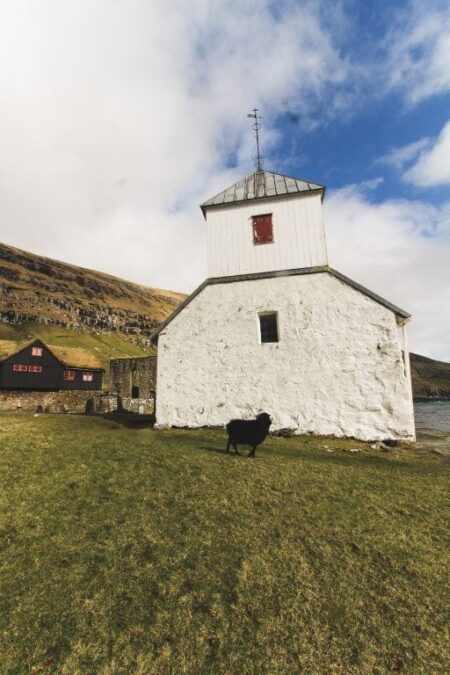
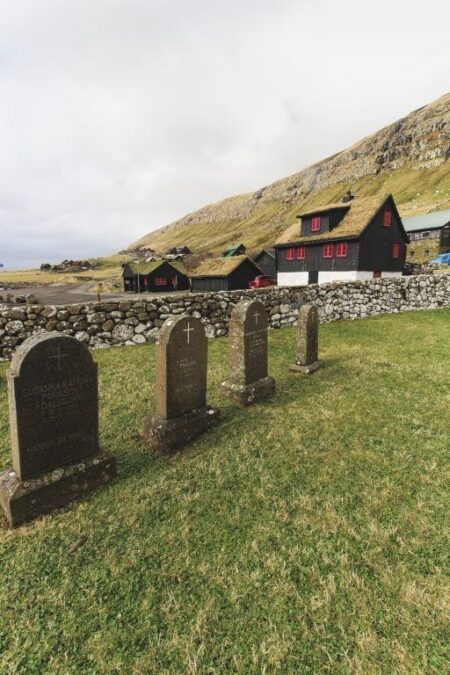
Kirkjubøargarður
Literally meaning “King’s Farm”, Kirkjubøargarður is one of, if not the oldest, still inhabited wooden houses in the world. Dating back to the 11th century, it was initially used as the episcopal residence and seminary of the Diocese of the Faroe Islands.
There are many legends that surround Kirkjubøargarður, and one of the most noteworthy ones is that the wood for the houses came as driftwood from Norway and was collected, sorted, and arranged to be used as building material.
If you know the Faroe Islands, you’ll know that there are no natural trees or forests on the islands, therefore making wood a very valuable and sought-after material.
The oldest part of the farmhouse is the smoke room, or roykstova. It doesn’t quite fit with its foundation in its present state which has given an indication that it was moved from its original state.
It is also said that Bishop Erlendur wrote the “Sheep Letter” inside of Kirkjubøargarður in 1298, which gave us the earliest documentation of the Faroe Islands we know today.
Interestingly, the Patursson family, which has been the house’s occupants since 1550, is still living residing there (the 17th generation!)
Today, the house has been turned into a museum. The farm also is home to sheep, cattle, and some horses and it is possible to purchase a coffee here and buy fresh mutton directly from the farmer himself.
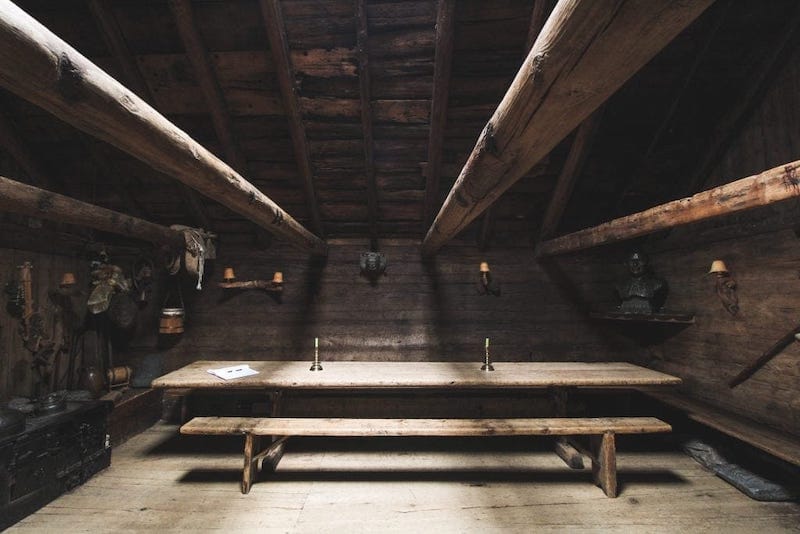
My Time Visiting Kirkjubøur
We headed out to Kirkjubøur in the middle of the afternoon and it was sunny as we arrived and started raining and became super windy within a matter of minutes. Welcome to the Faroe Islands, basically. I took the shades off and put my rainjacket’s hood up and soldiered on to explore this historic Faroese village.
After checking out the sites mentioned above, we decided to walk down closer to the water for some better views of Kirkjubøhólmur, an islet that sits in between Kirkjubøur and the island of Hestur in the background and is home to an eider duck community.
Kirkjubøhólmur actually contains remnants of the old Kirkjubøur which suffered from a fierce storm in the 16th century and destroyed most of the fifty homes that existed in the village at that time.
As we walked down by the sea we saw possibly the worst thing I could have ever seen… a dead sheep. The poor thing had its leg dismembered in rocks up from the shore a bit and it died on its way down to the water. Talk about ruining someone’s afternoon.
That event really shook me up and we stood around, took in the views, and then sheltered our wind-blasted bodies in the heated bus shelter until we packed up the car and headed back to Tórshavn.
Getting to Kirkjubøur from Torshavn
You can get to Kirkjubøur one of three ways really… by car, by foot, or by bus. The bus is free, as are all buses in and around Tórshavn. Just be sure to hop on the 101 to Kirkjubøur.
For directions on foot, you can check out these very detailed instructions from Make.fo.
If you have a rental car, the village is not far away from Tórshavn as noted above. It is simply about a twenty-minute drive south of the capital city.
You’ll pass the Gamlarætt ferry port on the way and that will let you know that you’re about five minutes from Kirkjubøur.
On a side note- Kirkjubøur would be an ideal pit-stop on your way to the ferry port if you’re looking to take the ferry to Sandoy for the day. You really don’t need much time in Kirkjubøur to see it all.
Should You Visit Kirkjubøur?
In conclusion, you definitely need to plot some time to check out Kirkjubøur. If I had to do it all over again, I would have made the effort to actually do the hike, but the weather wasn’t cooperating, so I am glad we did end up seeing it via car.
It also helps to learn Faroese a bit before going to the islands as you can really immerse yourself in the history of the place. But, you can certainly get by with English if not!
If you have any tips for travelers or questions, please leave them below! Thanks!
More Faroe Islands Travel Guides
- How to visit Kalsoy
- How to visit Kunoy
- Best Faroe Islands hotels
- Best Faroe Islands tours
- How to visit Sandoy
- How to visit Suduroy
- Gjogv travel guide
- Faroes travel tips
- Tjoruvik travel guide
- Camping in the Faroe Islands
- Faroe Islands packing list
- Places to visit in the Faroe Islands
- Airbnbs in the Faroe Islands
- Vagar Airport to Torshavn
PIN IT FOR LATER!
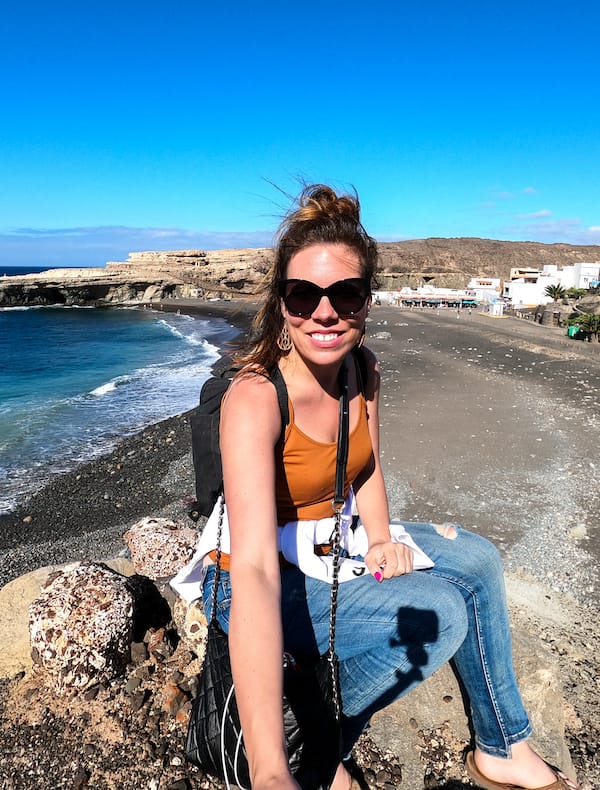
Megan is a travel blogger and writer with a background in digital marketing. Originally from Richmond, VA, she now splits her time between Frankfurt, Germany and Arctic Finland after also living in Norway, Armenia, and Kazakhstan. She has a passion for winter travel, as well as the Nordic countries, but you can also find her eating her way through Italy, perusing perfume stores in Paris, or taking road trips through the USA. Megan has written for or been featured by National Geographic, Forbes, Lonely Planet, the New York Times, and more. She co-authored Fodor’s Travel ‘Essential Norway’ and has visited 45 US states and 100+ countries.

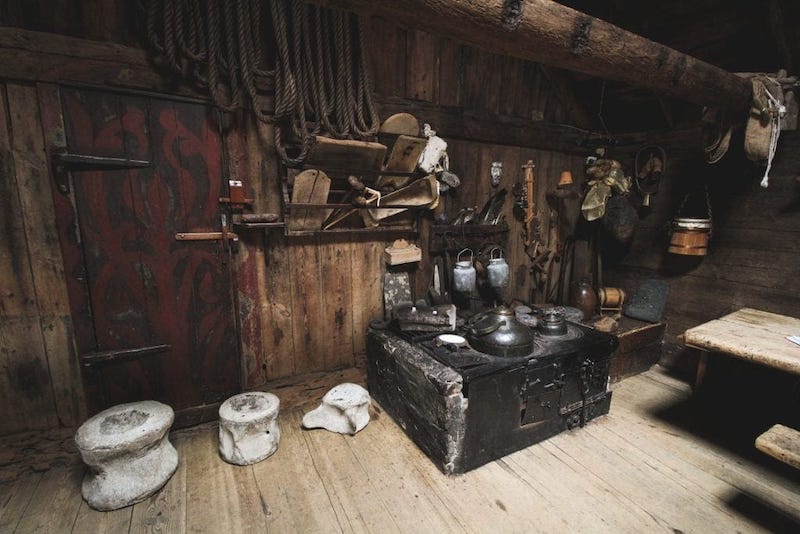
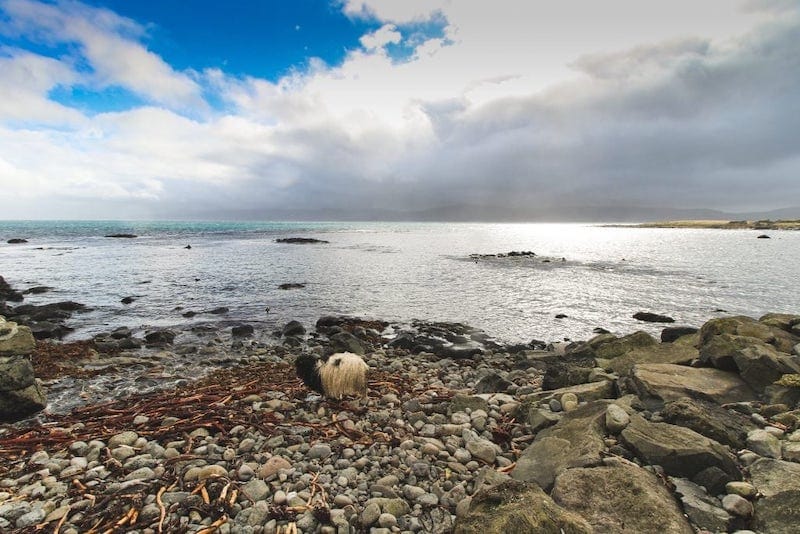
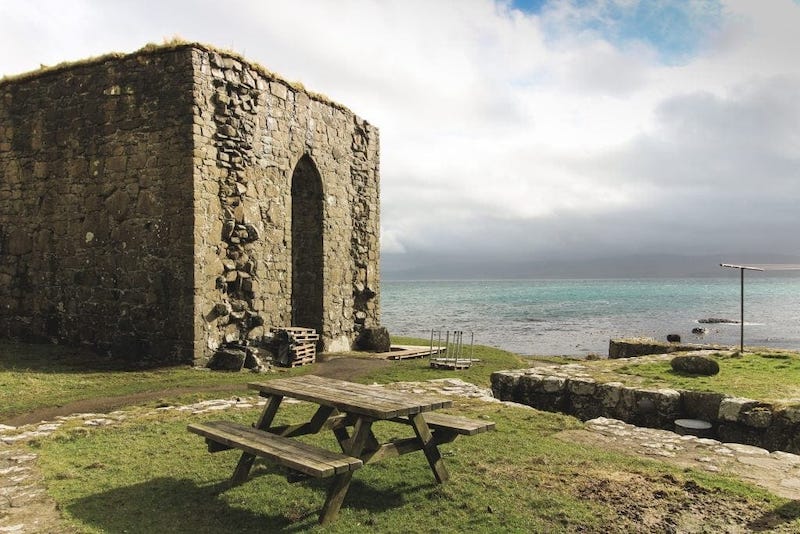
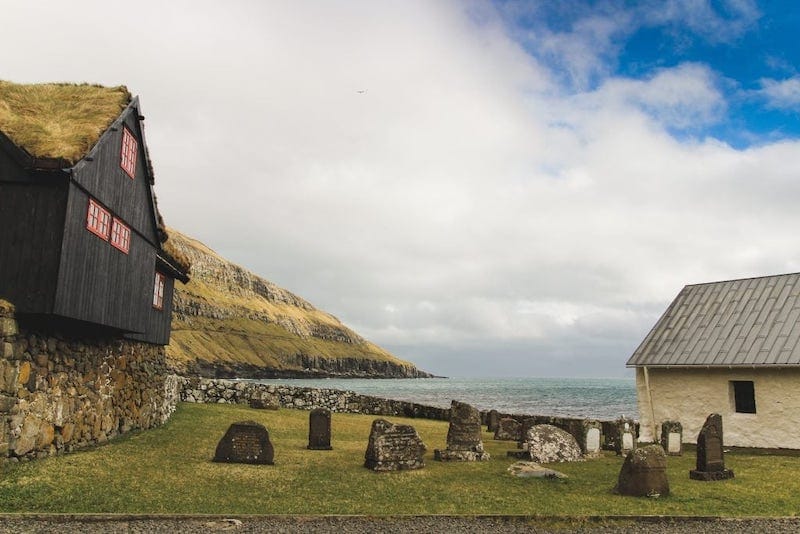
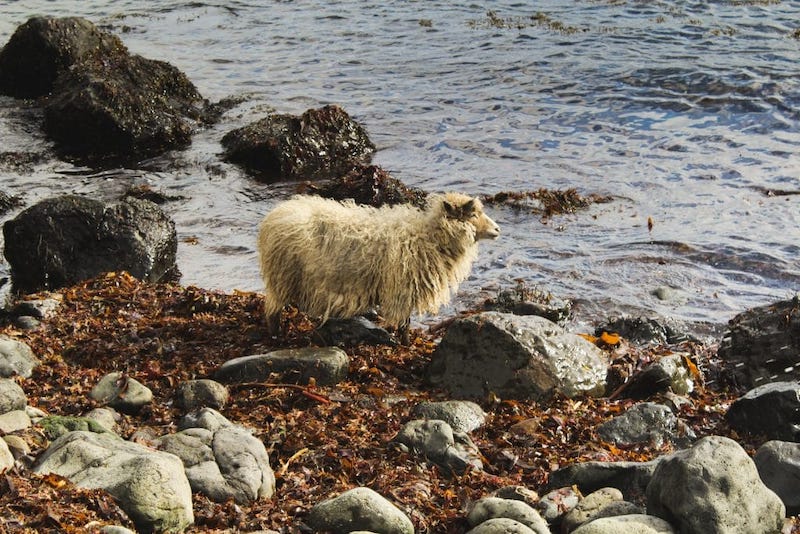
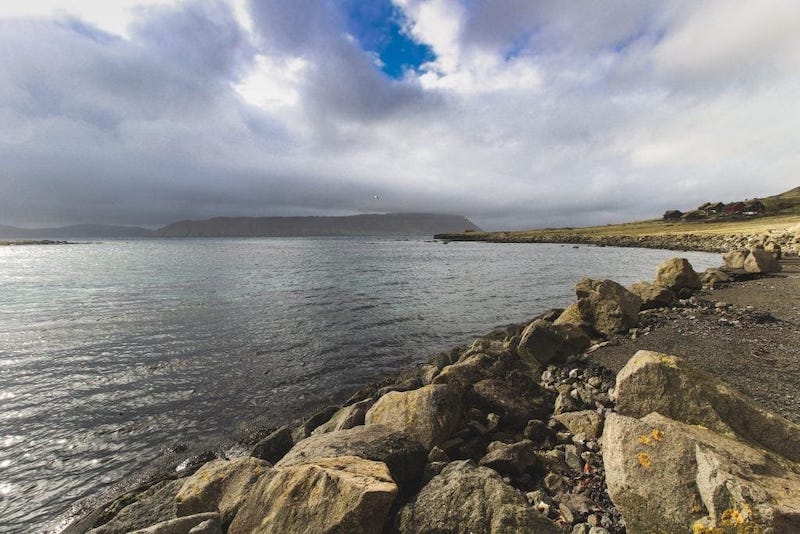
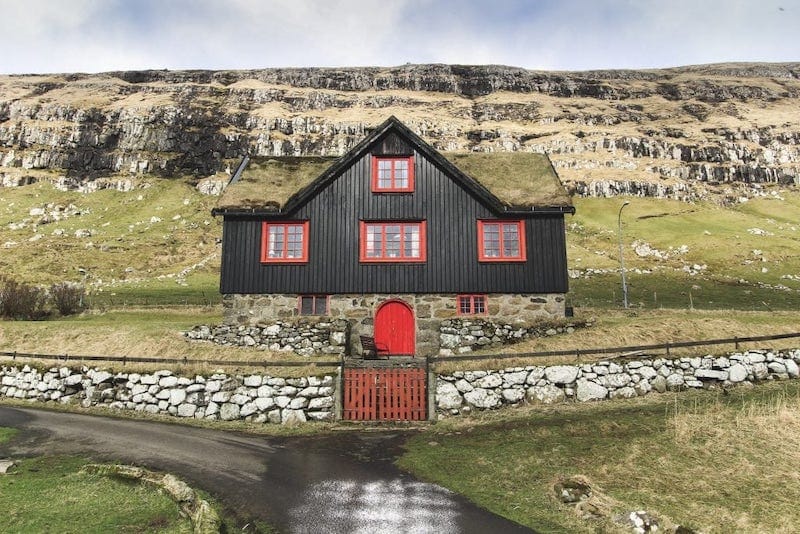
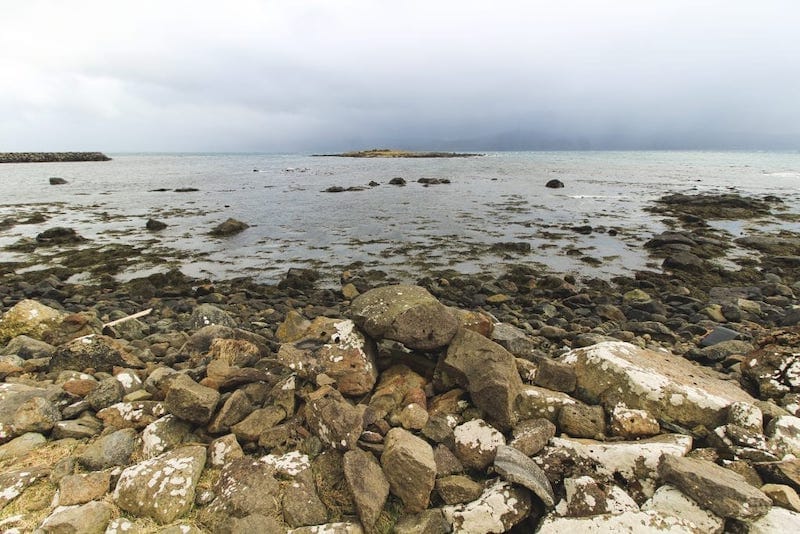
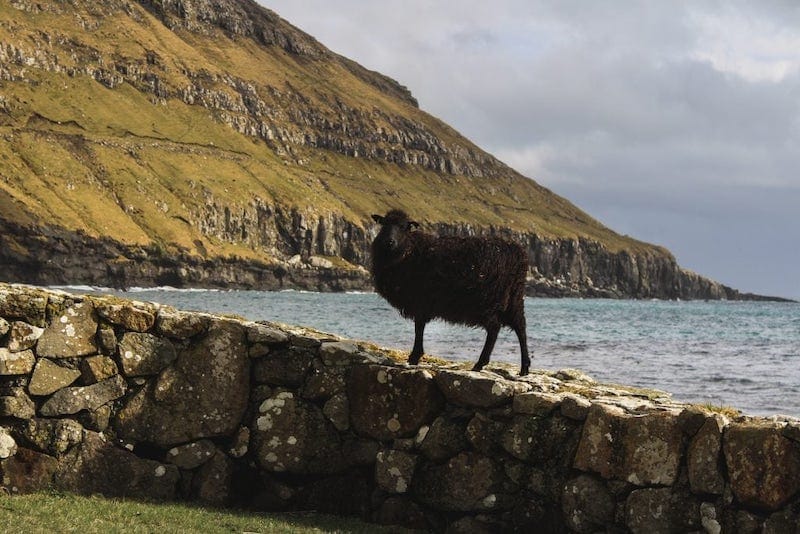
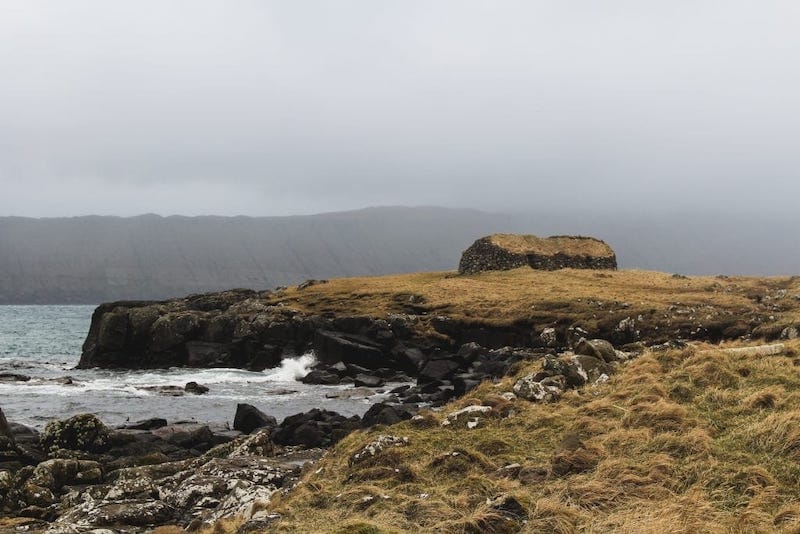
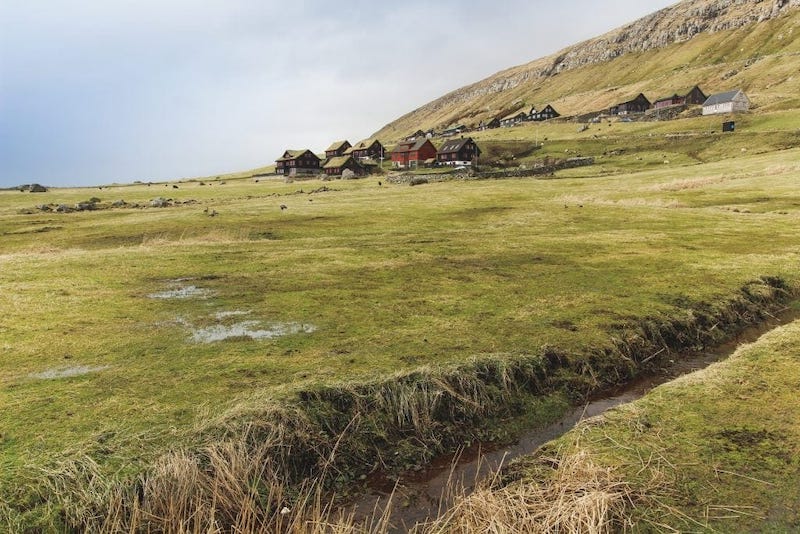

What incredible pictures, I had to look up Kirkbou and the Faroe Islands. Your pictures took my breath away, I can only imagine a town like this in an old viking movie. Now I have to get there! Thanks so much for sharing,
Thanks so much, Bianca! I really hope you get to make it out that way someday <3 Thanks for the comment!!
This place is seriously the cutest! I love the old headstones!
It was the most charming of towns!